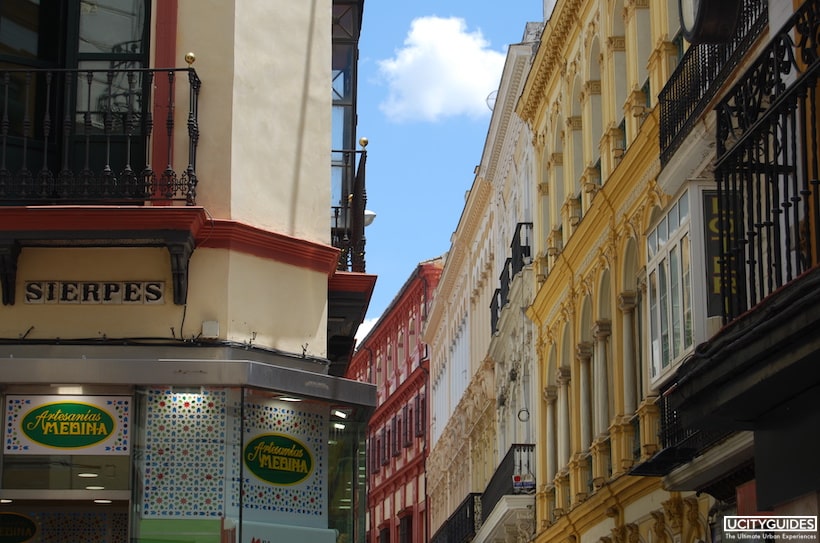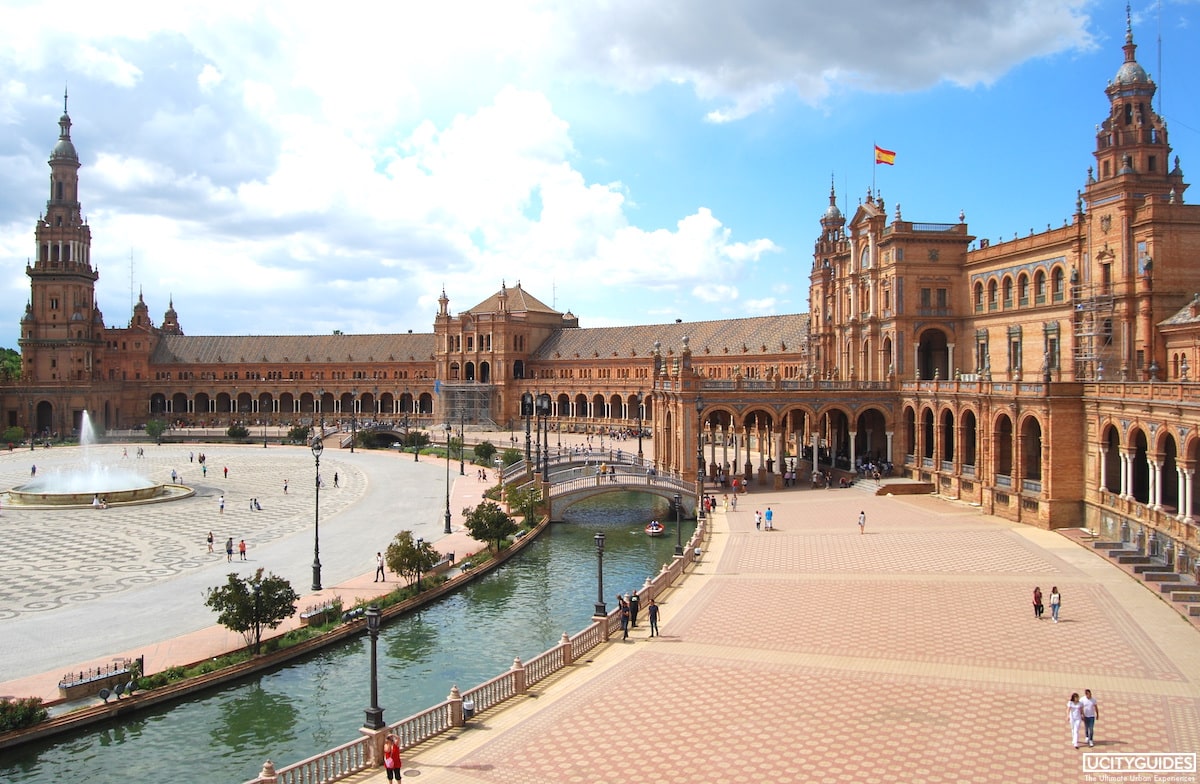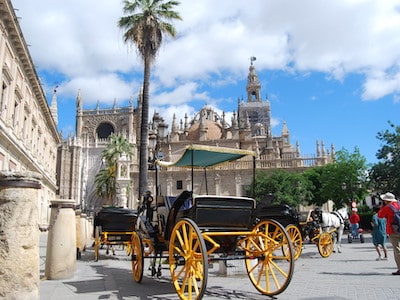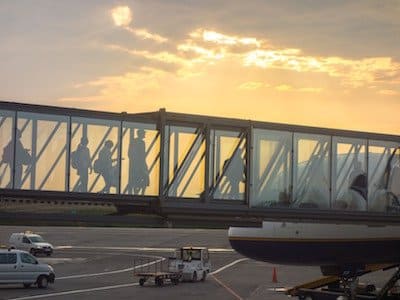It may lack the cool factor of Barcelona, the movida of Madrid, or the modern architectural wonders of Bilbao and Valencia, but Seville is the most beautiful and seductive of all Spanish cities.
Rich in Moorish architecture and home to the passionate flamenco and bullfighting, it is the soul of Spain. It retains that soul and its character even as it modernizes, and walking through its winding backstreets reveals the mark of a glorious past.
Its cathedral (the world's third largest) used to be a great mosque, reflected in its tall bell tower that was built as a minaret. The maze of whitewashed streets leading to it is filled with flower-decked patios, picturesque plazas and alleys, and tapas bars.
A horse-and-carriage ride in Plaza de España is another popular delight, but escaping the city's sultry summer heat to the beaches of Costa del Sol is also tempting. In fact, Seville is the perfect gateway to exploring all of the magical province of Andalusia, including the must-see historical cities of Cordoba and Granada.
The exotic splendor of Seville, together with the beauty and variety of its surroundings, create the perfect romantic and
rewarding city break destination. A long, relaxing break.
What to See and Do in Seville
Decide what you really want to see in Seville based on your interests -- whether that's art, architecture, street life or simply snapping a few photos by the main landmarks. We highlight the best attractions in different categories and, to help you plan, link you to their location on Google Maps () or to their official website or tour options ().
- The Landmarks, Icons, and Instagram Spots
- Ancient Site
- Striking Architecture
- City Life and Main Streets
- Shopping
- Eating and Drinking
The landmark bell tower of Seville's huge Gothic Cathedral was actually a minaret when it was built in 1198. That's because the building on this site was a mosque before it was converted into Europe's largest cathedral in the 15th century.
Still Moorish is the 13th-century Torre del Oro, a tower standing by the Guadalquivir River, built to protect the city's port. It now houses a small maritime museum.
Also by the riverfront is the Maestranza Bullring, built in the 18th century with a white and ochre Baroque façade.
Not far is the Hospital de los Venerables, a home for elderly priests in the 17th century and now a cultural center which you should visit for its splendid Baroque church.
The Real Alcazar is a royal palace with exquisite Moorish architecture. It's the city's must-see attraction, and part of the grandiose interior is a series of patios and landscaped gardens.
Alamillo Bridge was designed by Santiago Calatrava and completed in 1992 for the World Fair that took place in Seville in 1992. It was made to appear as if it's balancing, with a leaning central mast and a design said to resemble a harp.
Shop down Calle Sierpes or simply take a look at its local products for sale, from the traditional lace headdresses ("mantillas"), to fans and hats.
Other traditional local experiences include a flamenco show in Triana (once the city's Gypsy neighborhood) or going for a meal of tapas in the backstreets.
You may also choose to go on a romantic horse-and-carriage ride in Plaza de España, a monumental square that in reality is a half-circle. It was built in 1929 for the Spanish-American Exhibition, and there is a series of tile panels representing Spain's different provinces.

The pedestrian Calle Sierpes shopping street - ©UCityGuides.com
The main shopping area in Seville is Calle Sierpes and its surroundings. You'll walk past small boutiques on the side streets, and find everything from the traditional Andalucian shawls to the Spanish big names like Zara and Mango.
The Triana neighborhood has beautiful ceramics that most visitors end up taking as souvenirs, while for upscale shops the address is Plaza Nueva.
Local artists show their stuff every Sunday at a simple but interesting art market on Plaza del Museo next to the Museo de Bellas Artes, and other markets include the famous flea market every Sunday morning in Alameda de Hercules. On Thursday there's the El Jueves, with all kinds of stalls filling Calle Feria.
Keep in mind that many of the shops close between 2 and 5PM for siesta time.
Spain's famous tapas were first served in Seville. Going for a tapeo (a tapas bar-hop) in the Santa Cruz neighborhood is an experience you can't miss, although you should also take some time to sample the new and creative cuisines at the more recent restaurants. You'll find that this is a city made for eating and drinking, with long (and late) meals washed down by a good vino.




